Chinese New Year Lanterns: A Cultural Epic Spanning 4,000 Years
- ForestPainting
Chinese New Year lanterns are a time-stamped mark of Chinese civilization spanning four millennia, and the most vivid visual symbol of Spring Festival culture. When lanterns illuminate the winter night, and lantern festivals reawaken cities, these brilliant lights not only carry on ancient sacrificial traditions but also hold people’s eternal hopes for reunion and good fortune.
As a vital part of Chinese New Year customs, the art of lanterns perfectly blends traditional craftsmanship with modern aesthetics. From the red lanterns hung on every doorstep to the grand lantern festivals in parks and plazas, lanterns, in their unique way, record the changes of the times, pass on cultural memory, and connect the past with the future.
This article will lead you to explore the history and development of Chinese New Year lantern, interpret the cultural codes behind them, and show how this traditional art form has flourished with new vitality in different eras. By understanding the historical evolution, craft features, and modern innovations of lanterns, we may gain a deeper appreciation for the unique charm of this ancient festival and its cultural value in contemporary society.
The Origins and Evolution of the Chinese New Year
1. Ancient Origins
The origins of the Chinese New Year can be traced back to ancient times and its annual ritual ceremonies of praying for a good harvest. Oracle bone inscriptions from the Shang Dynasty already show a relatively systematic concept of the year. The character “年” (nián) in oracle bone script resembles a person carrying a ripe grain stalk on their back, visually representing the concept of a mature harvest.
The “Seventh Month” section of the Classic of Poetry from the Zhou Dynasty gives a detailed account of agricultural activities and life customs performed in different lunar months. The lines “In the tenth month, clear the field, with friends drink wine, and say, ‘Slaughter the lamb,‘” vividly depict a year-end sacrificial scene. This time-based concept, rooted in agricultural activities, laid a profound foundation for the formation of Chinese New Year customs in agricultural civilization.
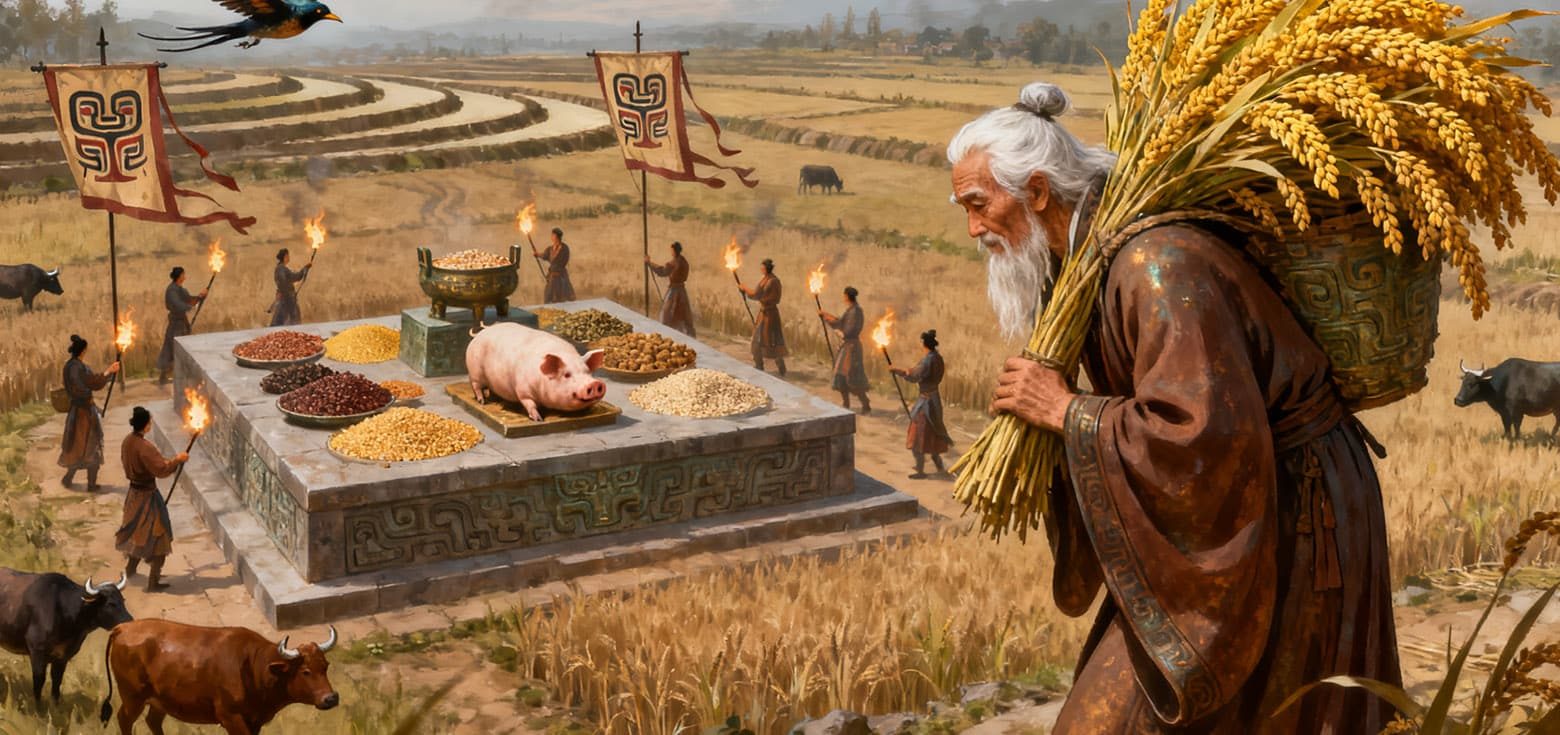
2. Calendar Evolution
The refinement of the calendar system was of decisive significance to the formation of Spring Festival customs. As early as the Xia Dynasty, the Xia Xiaozheng already contained a relatively systematic body of calendrical knowledge.
A monumental milestone was the creation of the Taichu Calendar in the seventh year of the Yuanfeng reign of Emperor Wu of Han (104 BCE) by astronomers Deng Ping, Luo Xiahong, and others. This calendar officially designated the first month of the lunar year as the beginning of the year and established the first day of the first lunar month as “元旦” (Yuandan). This change not only held significant astronomical importance but also marked a crucial turning point for New Year customs, transitioning them from a folk ritual to a national institution.
3. Development in the Tang and Song Dynasties
The Tang Dynasty was a key period for the development of Lunar New Year customs, with festive activities becoming increasingly rich and diverse. Tang Dynasty poet Meng Haoran’s poem “New Year’s Day in a Farmstead” vividly depicts a pastoral New Year scene: “The father in the mulberry fields ready to plow, the child with hoe follows the shepherd boy. The farmstead reads the weather, and all say this year will be bountiful.“
The development of a commodity economy in the Song Dynasty promoted the popularization of Spring Festival customs. The Dongjing Meng Hua Lu (Dreams of the Eastern Capital) recorded the lively scene of celebrating the New Year in Bianjing: “On the first day of the first lunar month, the Kaifeng Prefecture allows games for three days. Officials and commoners congratulate each other from early morning, and in the alleys, people sing and call out to play games with food, fruits, and firewood.” The Spring Festival customs during this period had already largely formed a systematic whole.
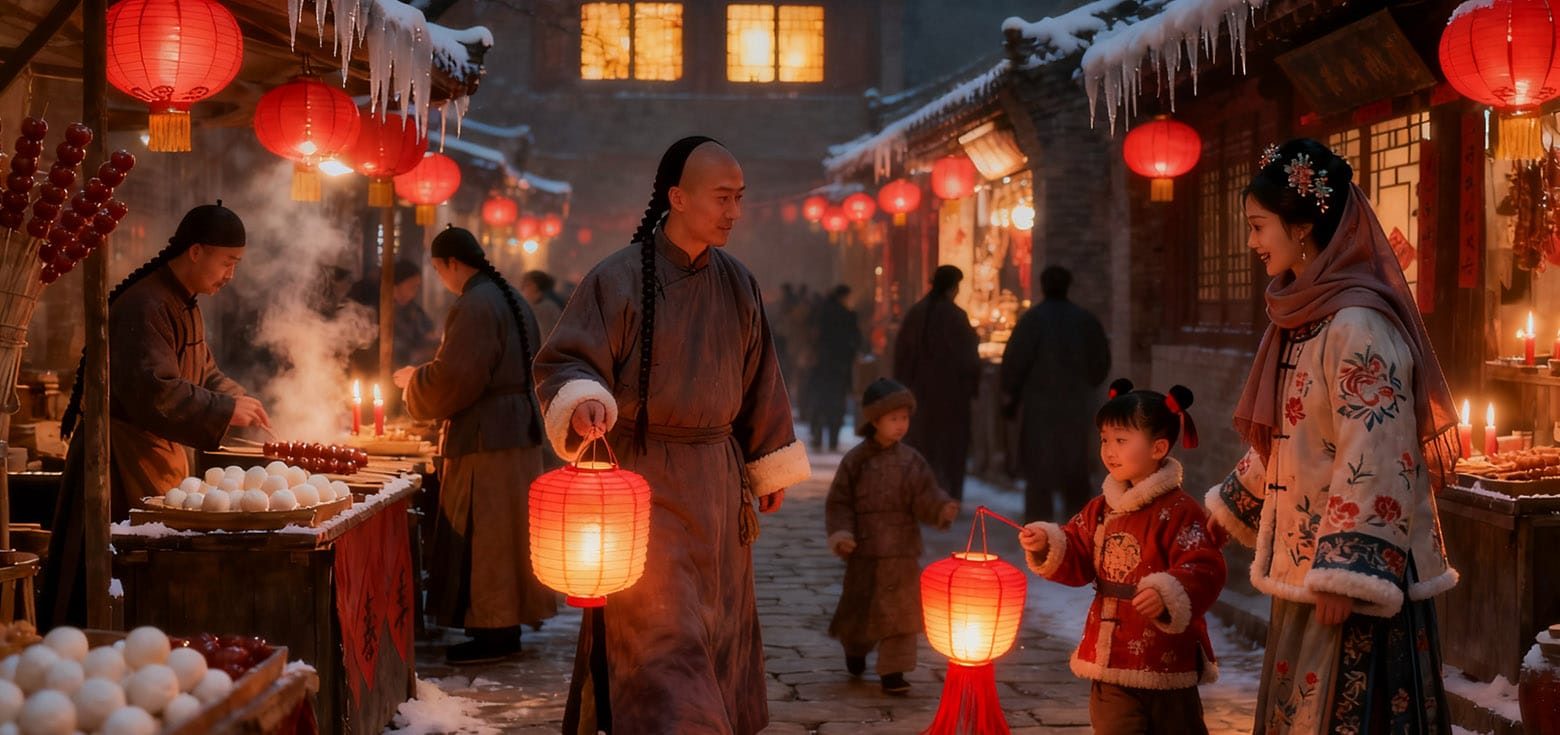
4. Refinement in the Ming and Qing Dynasties
During the Ming and Qing dynasties, the system of Lunar New Year customs became more complete and finalized. Liu Ruoyu’s Zhuo Zhong Zhi from the Ming Dynasty recorded: “From the first day to the tenth day of the first lunar month, the common folk call it the ‘Ten Days.‘”
Pan Rongbi’s Dijin Suishi Jisheng from the Qing Dynasty detailed the complete set of New Year customs in the Beijing area, from preparations in the twelfth lunar month to celebrations in the first lunar month. During this time, different regions developed their own unique Spring Festival customs, and the content and form of New Year cultural activities were greatly enriched.
5. Modern Changes
After the 1911 Revolution, China adopted the Gregorian calendar, designating January 1st as “元旦” (Yuandan), while the first day of the first lunar month was named “春节” (Spring Festival). This change allowed the Spring Festival to retain its traditional features while beginning to integrate with modern life.
In September 1949, the First Plenary Session of the Chinese People’s Political Consultative Conference officially designated the Spring Festival as a legal holiday, giving the traditional festival new vitality in a new era. Since the reform and opening up, with social and economic development, Spring Festival customs have been continuously passed down and innovated, forming a unique blend of the traditional and the modern.
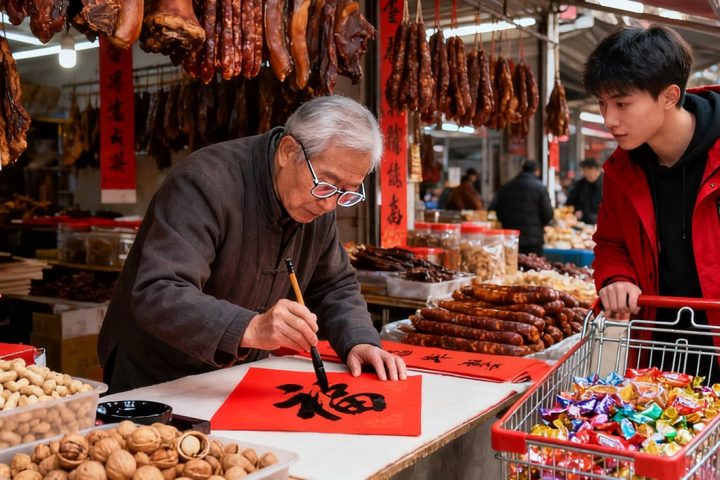
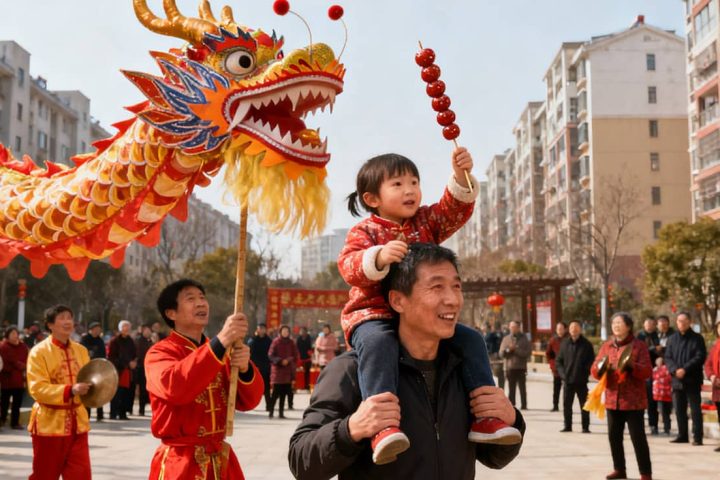
The Cultural System of Chinese New Year Customs
Spring Festival customs form a complete cultural system that embodies the philosophical ideas of harmony between man and nature, and of respecting ancestors. According to the General Records of Chinese Folklore, Spring Festival customs can be divided into three main stages: pre-New Year preparations, New Year’s Eve traditions, and first lunar month celebrations.
1. Pre-New Year Preparations
Starting from the twelfth lunar month, people begin to prepare for the New Year. The “Little New Year” (the 23rd or 24th of the twelfth lunar month) marks the beginning of the preparations, which include the following customs:
Worshipping the Kitchen God: Offering sugar melons to the Kitchen God, praying for him to “report good things to heaven.”
Spring Cleaning: Thoroughly cleaning the house, symbolizing getting rid of the old and welcoming the new.
New Year Shopping: Purchasing food, new clothes, decorations, and other goods for the New Year.
2. New Year's Eve Traditions
New Year’s Eve is the climax of the Spring Festival, with an especially rich variety of customs:
Pasting Spring Couplets: Writing auspicious couplets on red paper to express good wishes.
Hanging New Year Paintings: Displaying woodblock prints with auspicious meanings.
Reunion Dinner: The entire family gathers for a grand New Year’s Eve dinner.
Staying Up Late: Staying up all night to welcome the arrival of the new year.
Giving Lucky Money: Elders give red envelopes to the younger generation, which is believed to ward off evil spirits.
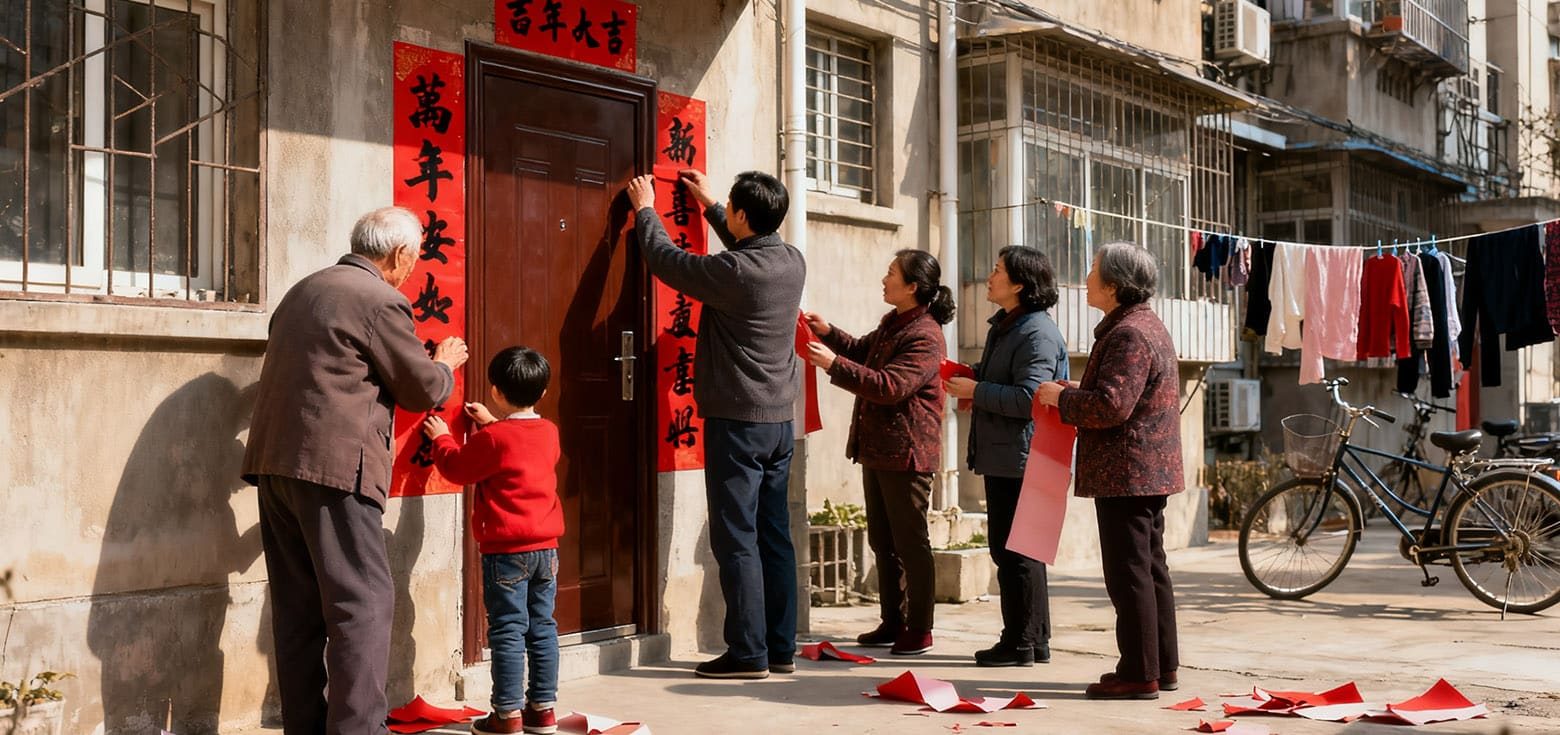
3. First Lunar Month Customs
Starting from the first day of the first lunar month, people visit relatives and friends to extend New Year greetings:
New Year Greetings: The younger generation pays respects and offers greetings to their elders, while peers exchange good wishes. People commonly say blessings like “新年快乐” (Happy New Year) and “恭喜发财” (wishing you prosperity).
Dragon and Lion Dances: Folk performances that add to the festive atmosphere.
Temple Fairs: Folk activities that integrate worship, entertainment, and commerce.
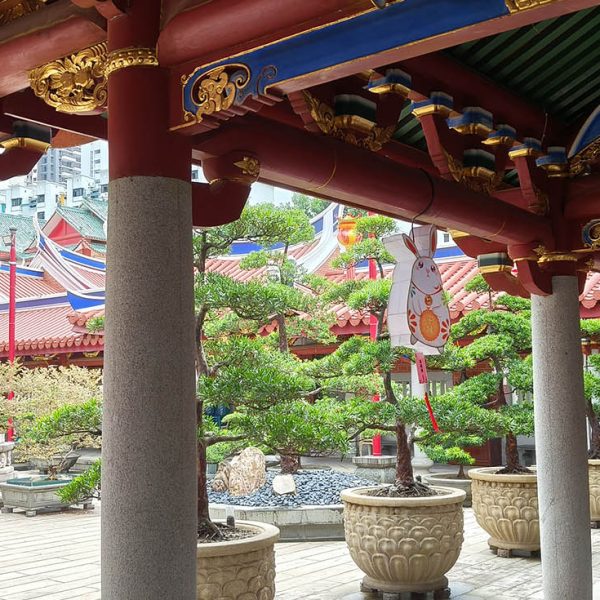
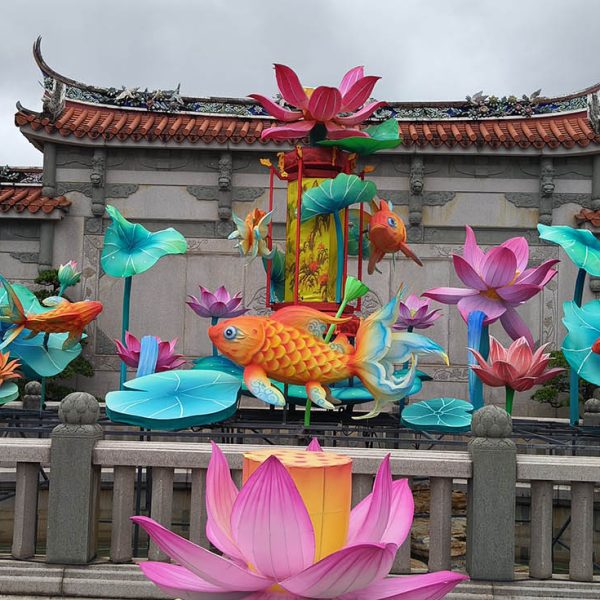
4. Sacrificial Traditions
Spring Festival sacrificial activities reflect the Chinese philosophical idea of “harmony between man and nature.” These activities primarily include three levels: sacrificing to heaven, to ancestors, and to deities. Sacrificing to heaven expresses reverence for nature, sacrificing to ancestors reflects remembrance for one’s forebears, and sacrificing to deities demonstrates a worship of supernatural powers. This harmonious sacrificial system of “heaven, earth, and man” showcases a unique Chinese cosmology and view of life. The sacrificial rituals in different regions have their own unique characteristics but all maintain a serious and solemn traditional etiquette.
5. Eating Culture
New Year food varies by region:
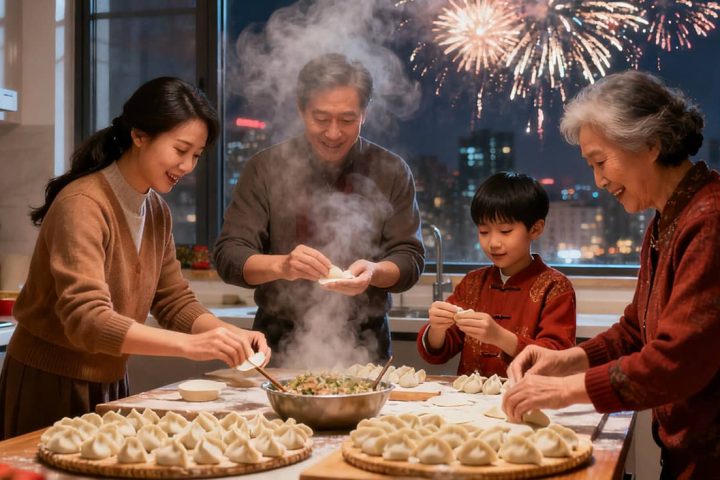
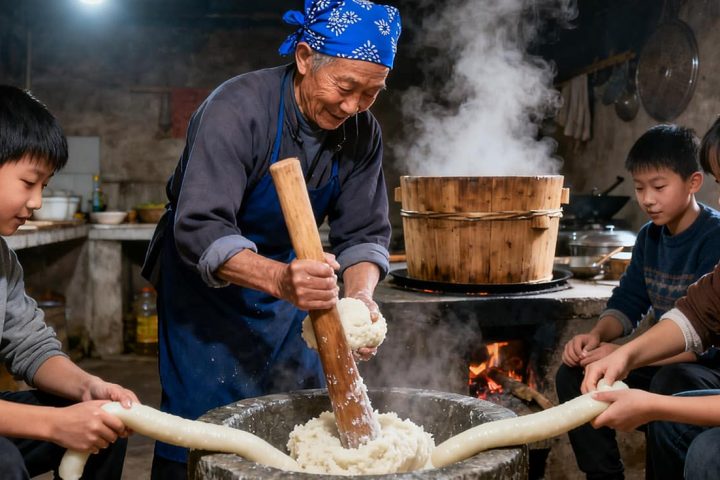
Northern Dumplings: Shaped like ancient ingots, symbolizing good fortune and prosperity.
Southern Nian Gao: A homophone for “higher year,” symbolizing continuous improvement year after year.
Eight-Treasure Rice: With rich ingredients, it represents a bumper harvest.
Whole Fish: Symbolizes “年年有余” (nián nián yǒu yú), meaning abundance year after year
These foods not only satisfy the palate but also carry rich cultural symbolism. Modern Spring Festival foods, while carrying on tradition, also incorporates modern concepts of health and diversity.
6. Decorative Arts
Chinese New Year decorations are dominated by the color red, forming a unique system of visual symbols, including:
Spring Couplets (Chūnlián): Originated from peach wood talismans (táofú); paper couplets began to appear during the Five Dynasties period. They are pasted on doorframes, using balanced, antithetical lines of text to express auspicious wishes.
New Year Paintings (Niánhuà): The earliest door god paintings can be traced back to the Han Dynasty. Their content gradually expanded from warding off evil and averting disaster to conveying auspicious meanings, making them a veritable encyclopedia of folk art.
Paper Cuttings (Jiǎnzhǐ): Northern window paper cuttings are bold and unrestrained, while Southern carved paper is exquisite and delicate. They are often pasted on windows and walls, symbolizing celebration and good fortune.
The “Fú” Character (Good Fortune): When pasted upside down, it symbolizes that “Good Fortune has arrived” (“Fú Dào le”), making it the most direct and widespread symbol of blessing during the New Year.
New Year Lanterns:light to dispel the winter chill, symbolizing the illumination of the path ahead for the New Year, and representing the wish for a thriving family and a bright future.
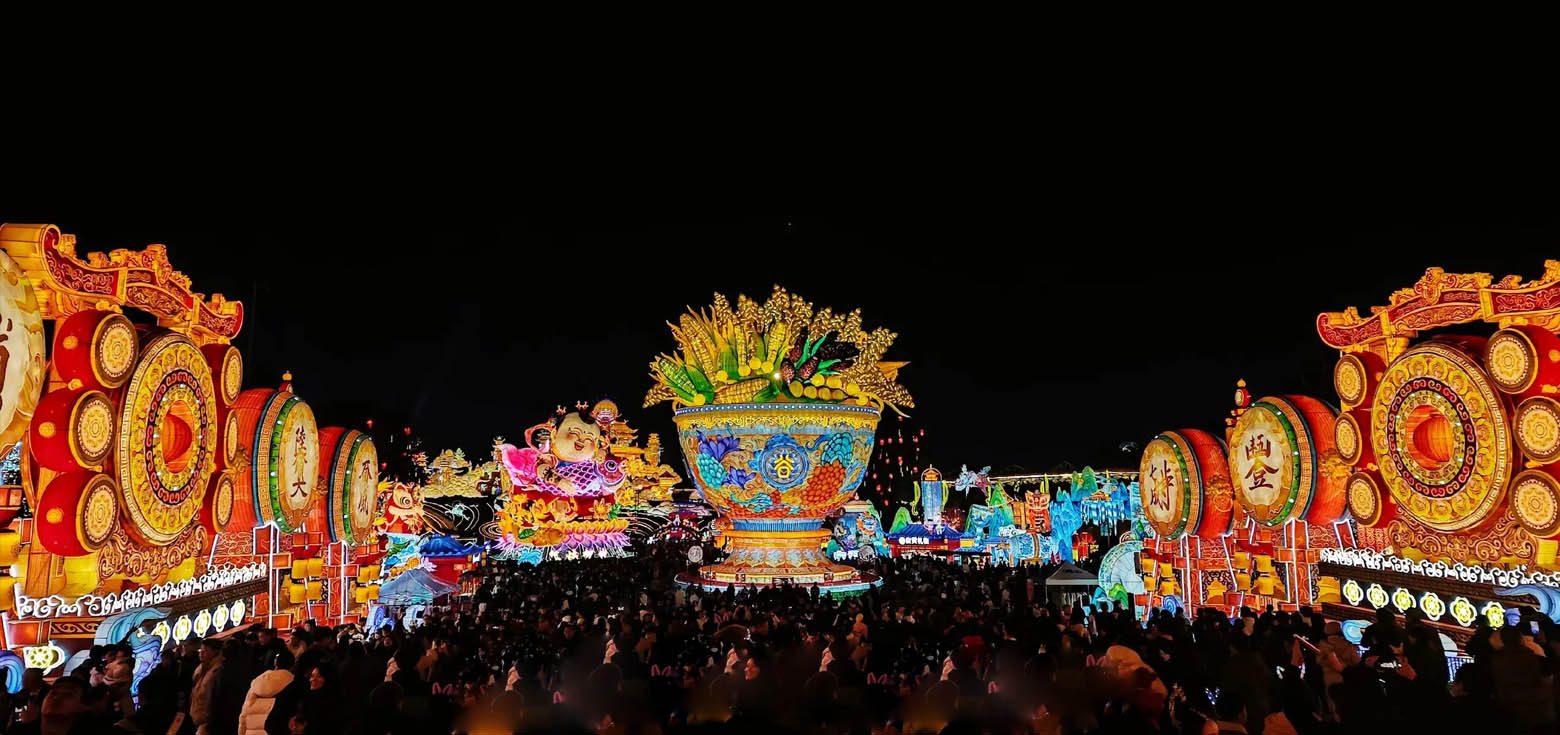
These decorations not only beautify the environment but also create a strong festive atmosphere.
The History and Culture of Lunar New Year Lanterns
As an important decorative element of the New Year, lanterns have a history that can be traced back to ancient fire worship, and after thousands of years of development, they have formed a unique art system and cultural connotation.
1. Historical Origins
In ancient times, people lit torches to ward off wild beasts and evil spirits. The Book of Rites records: “Burning firewood on the great altar is a sacrifice to heaven.” This custom of using fire for sacrifice can be seen as the earliest form of lanterns. In the Han Dynasty, lanterns began to appear, initially made from silk and lit with candles, and were called “纱灯” (gauze lanterns).
2. Regional Characteristics
Distinctive New Year lantern styles have formed in different parts of China:
Zigong Lanterns: Known as the “number one lanterns under heaven,” their history can be traced back to the Tang Dynasty. Zigong lanterns are famous for their grand scale and exquisite craftsmanship, blending traditional techniques with modern technology. They were included in the list of national intangible cultural heritage in 2008.
Beijing Palace Lanterns: Originating in the Ming Dynasty, they were initially used in the imperial palace. Palace lanterns are often made from precious woods like rosewood and red sandalwood, decorated with silk paintings and glass, giving them an elegant and noble appearance.
Xiashi Lanterns: A traditional lantern art from Xiashi Town in Haining, Zhejiang, famous for its needle-pricking technique. Various patterns are pricked onto the lantern sheets, creating a beautiful effect when lit, earning them the title of “the first lanterns of Jiangnan.”
Foshan Lanterns: A traditional craft from Foshan, Guangdong, known for its magnificent and intricate decorations. They are often embellished with materials like copper foil and glass beads, showcasing a rich Lingnan style.
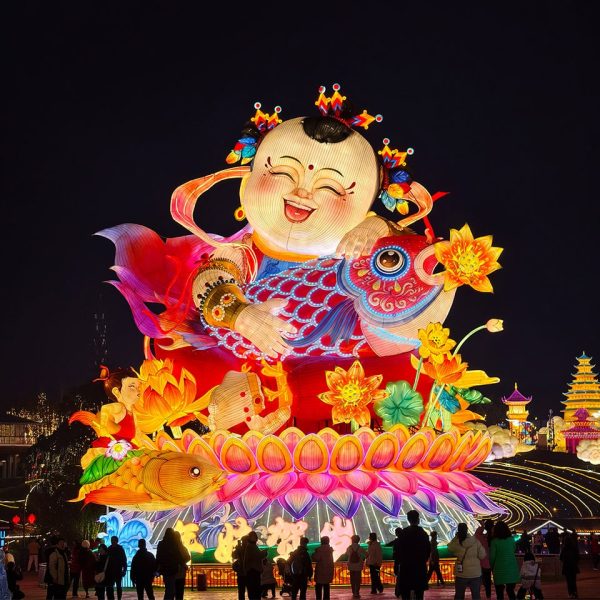
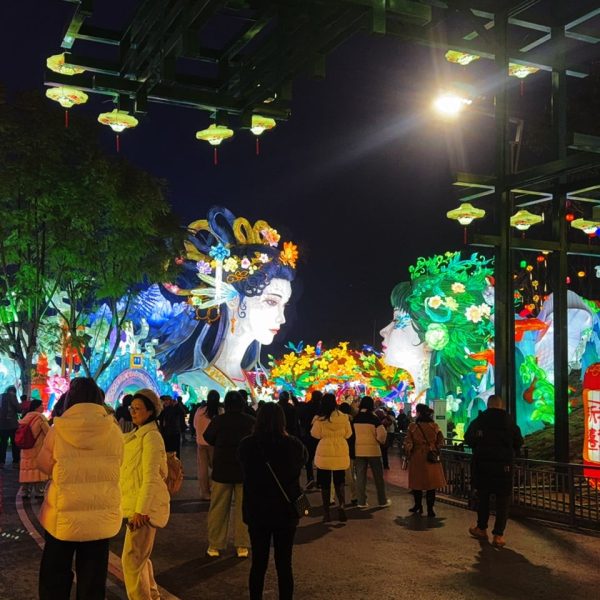
3. The Unique Function and Ritual Role
Unlike the Lantern Festival displays, which are primarily for viewing, Chinese New Year Lanterns are deeply embedded in the ritual preparation before the year and the ceremonies during the year, making their functions more specific and profound.
A Ritual Tool for Exorcism and Blessing: Their origin can be traced back to the ancient practice of “fire worship,” where people believed that firelight could ward off the mythical beast known as “Nian.” Therefore, the custom of hanging red lanterns in front of the door during the New Year was originally a powerful sorcery and ritual act, intended to use red light and brightness to protect the home, ushering in a pure and peaceful prelude to the new year.
Defining Sacred Festival Space: Lanterns possess the magic of transforming everyday space into a sacred festival space. When big red lanterns are hung on eaves and in halls, they delineate the realm of the festival, proclaiming a special period distinct from the ordinary, one filled with taboos and blessings. As the saying goes, “The bright moon hangs high in the sky, and ten thousand colored lanterns illuminate the ground,” the light from the lanterns and the moon jointly construct the unique spatial and temporal experience of the Spring Festival.
A Symbol of Family Progeny: Because the word for “lantern” (灯, dēng) is a homophone for the word “male offspring” or “progeny” (丁, dīng), within the New Year context, lanterns (especially those displayed in pairs) become a potent symbol for praying for family prosperity and the continuation of the family line. Adding a lantern to the home symbolizes tian ding jin kou (添丁进口), meaning “gaining new family members.” This is a very core and unique cultural meaning of the Chinese New Year lantern.
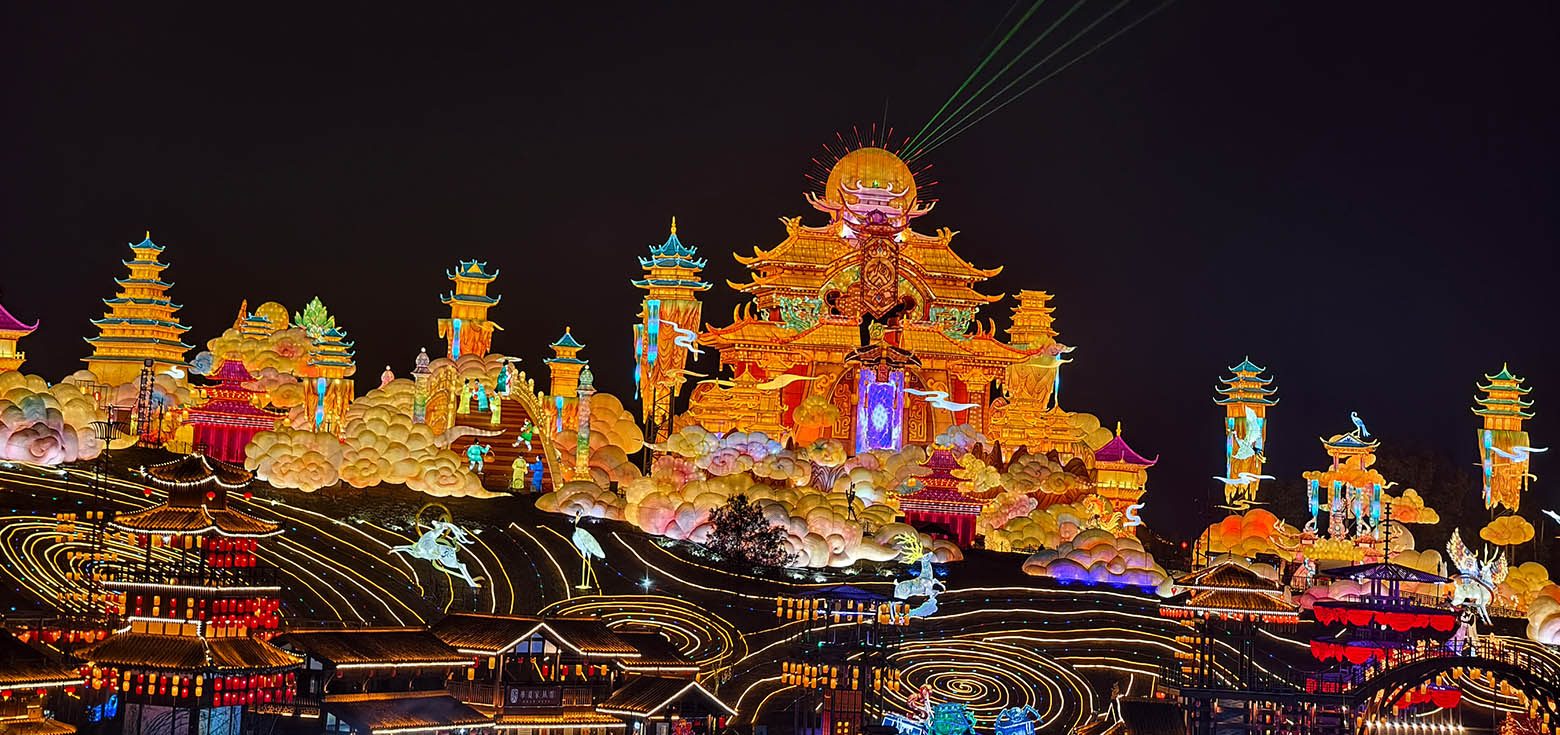
4. Main Types and Cultural Symbolism
Several fixed types of lanterns appear during the Chinese Lunar New Year period, their symbolism directly linked to New Year wishes.
Doorway Lanterns (Red Lanterns): These are the most common and most important type of China New Year lantern, usually hung in pairs on both sides of the main entrance. Red symbolizes auspiciousness and warding off evil, while the circular shape represents reunion and perfection. Their auspicious meaning is “Good Fortune is coming” (鸿/红运当头) and “Double Happiness knocking at the door” (双喜临门), guarding the home and inviting good luck.
Indoor Decorative Lanterns: These include Palace Lanterns and Rotating Lanterns (Zou Ma Deng) hung in the main hall, as well as small table lamps placed on desks. Their main function is to add joy and light, symbolizing a prosperous and bright life ahead in the New Year. The rotation of the Zou Ma Deng symbolizes the passage of time and the bidding farewell to the old and welcoming the new.
Lanterns with Specific Symbolic Shapes:
Zodiac Lanterns: These lanterns, shaped like the animal corresponding to the year, are a unique New Year symbol that embodies the core theme of “bidding farewell to the old year and welcoming the new.”For example, as the zodiac for 2025 is the Snake, this year’s zodiac-themed lanterns will feature the snake, and they will be replaced with the zodiac Horse next year.
Fish Lanterns: Taking the pun of “fish” (yú) and “surplus” (yú), they are the most direct visual prayer for an abundant life (nian nian you yu) in the new year.
Ingot Lanterns / Fu Character Lanterns: These directly express the desire to welcome wealth and good fortune.
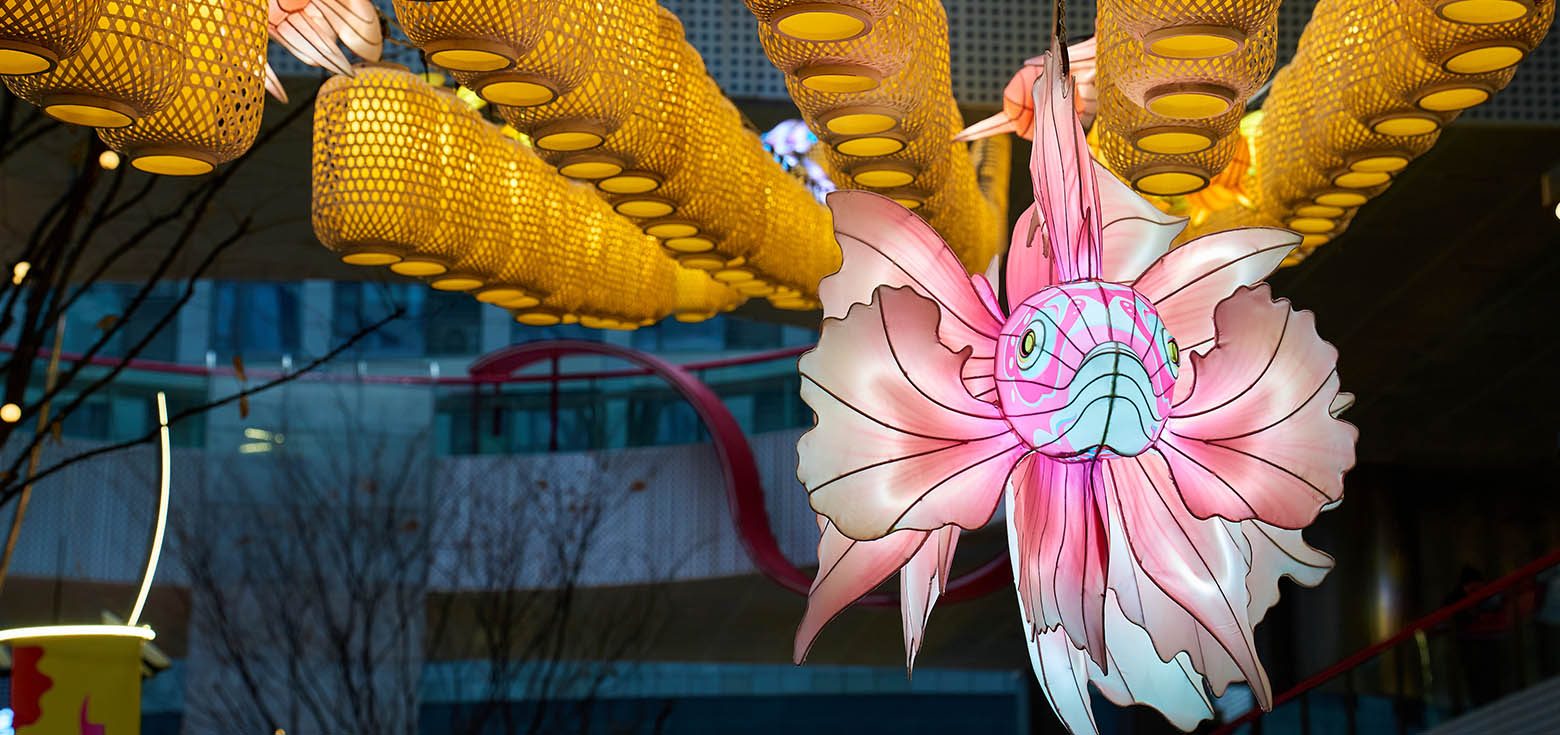
5. The Integration of China New Year Lanterns with Modern Festivals
Although customs continue to evolve, China New Year lanterns have found a new footing in modern society, and their function has been extended.
From Household to Public Space: Besides home decoration, modern cities adorn main streets, squares, and parks with large-scale New Year lantern displays. This extends the function of the lantern from private blessing to creating a public festive atmosphere, making them a city brand and a cultural tourism project.
Technological and Aesthetic Updates: LED lights, projection technology, and other advancements make the form of New Year lanterns richer and safer. However, regardless of the technology used, core cultural symbols such as red color, circular shape, and auspicious patterns are consistently preserved and emphasized.
A Bond for Emotional Connection: For modern people, the acts of participating in the hanging of lanterns, strolling through lantern markets, and admiring public lantern festivals themselves become important family activities and emotional rituals, strengthening cultural identity and kinship bonds across generations.
The Transformation and Development of Chinese New Year Lantern Festival
With the development of the times, New Year lantern festivals have evolved from traditional folk customs into comprehensive cultural events that integrate cultural displays, art appreciation, and tourism.
1. Cultural Value
Modern lantern festivals have become an important platform for the protection of intangible cultural heritage. In 2008, the Zigong Lantern Festival and Beijing Lantern Festival, among others, were included in the second batch of the national intangible cultural heritage list. Through lantern festival events, many traditional crafts that were on the verge of being lost have been protected and passed on. At the same time, the festivals provide a stage for folk artisans to showcase their skills, promoting the innovative development of traditional crafts. Museums and cultural institutions also host lantern exhibitions and craft displays to promote and educate about lantern culture.
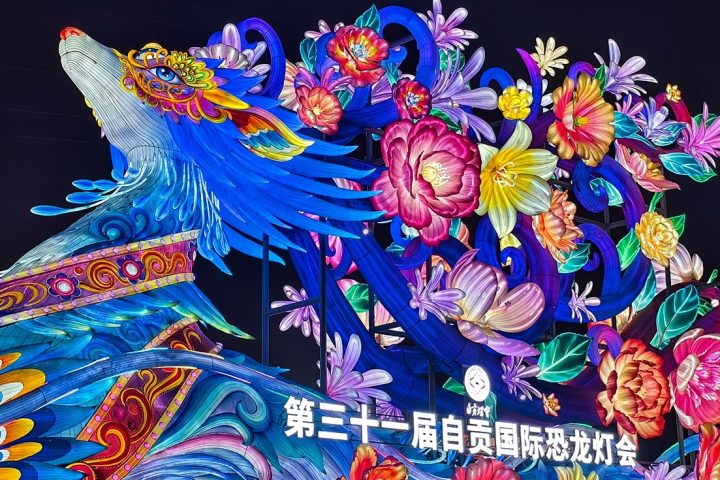
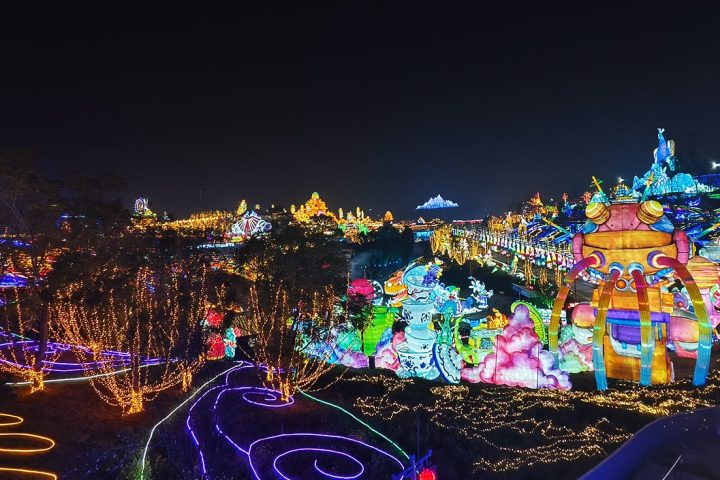
2. Artistic Innovation
Modern lantern festivals continuously innovate on the basis of tradition:
Material Innovation: New, environmentally friendly, and durable materials like LED lights and steel frames are used, making lanterns safer and more lasting.
Technological Advancement: New technologies such as light and sound control and mechanical transmission are used to create more vibrant and dynamic visual effects.
Content Innovation: Modern lantern festivals not only retain traditional themes but also incorporate contemporary elements, reflecting the characteristics of the present era.
Formal Breakthroughs: From static viewing to interactive experiences, they enhance participation and fun.For details, please refer to our case study on the Chengdu Agricultural Expo Park New Year Lantern Festival.
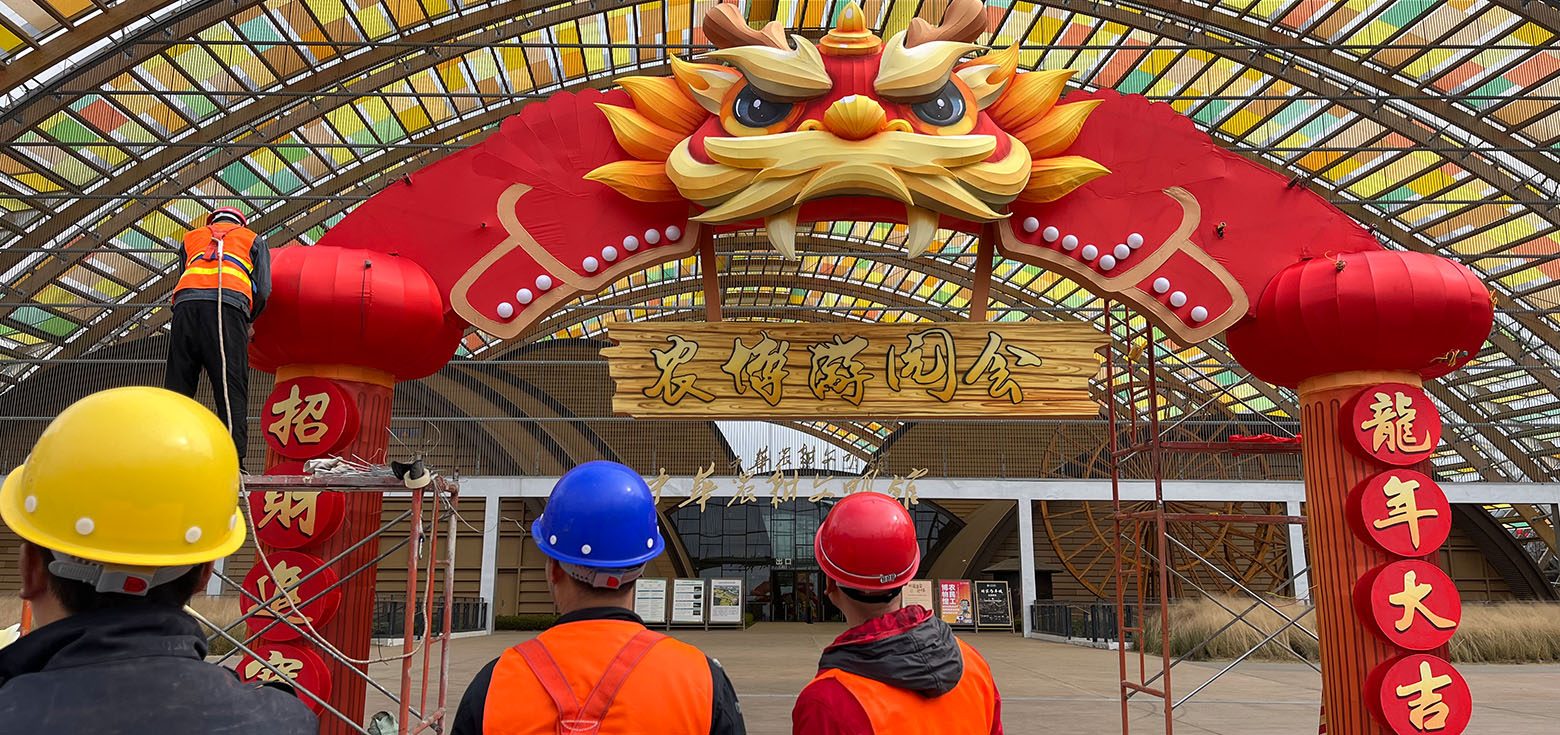
3. Economic Benefits
Lantern festival events have generated significant social and economic benefits:
Tourism Boost: Famous lantern festivals attract a large number of tourists, driving consumption in dining, accommodation, and transportation. For example, the 2025 Zigong International Light Festival received over 2 million visitors and generated over 500 million yuan in consumption.
Job Creation: The production, installation, and maintenance of lanterns create a large number of employment opportunities.
Brand Effect: They enhance the visibility and reputation of the host city.
The Global Spread of Chinese New Year Culture
As Chinese communities spread around the world and China’s cultural influence continues to rise, the Spring Festival has long transcended the scope of a national holiday, evolving into a cultural phenomenon that attracts global attention. Lunar New Year lanterns, as the most intuitive and captivating visual symbol of this festival, have become “envoys of light” for the promotion of Chinese culture and inter-civilization exchange.
1. Overseas Celebrations: A Brilliant Showcase for Cultural Dissemination
Major cities around the world have integrated Lunar New Year celebrations into their annual cultural calendars, forming unique brand events. These large-scale celebrations attract millions of local residents and tourists.
North America: Chinese New Year celebrations in New York City have been ongoing for decades, and the lighting of the Empire State Building in “China Red” for the Lunar New Year has become a tradition. In San Francisco, the Lunar New Year parade is one of the largest celebrations outside of Asia, attracting hundreds of thousands of spectators with dragon and lion dances, lantern displays, and floats. Vancouver, Canada, hosts an annual Spring Festival Parade and a lantern festival in Sun Yat-Sen Classical Chinese Garden, cleverly blending Chinese tradition with North American multiculturalism.
Europe: London’s Trafalgar Square Spring Festival celebration is one of the largest outside of Asia, attracting over 700,000 visitors annually. Giant zodiac-themed lanterns and stage performances on the square have become one of the city’s most brilliant winter attractions. Paris’s Chinatown, Berlin’s Potsdamer Platz, and other locations in Germany also host grand lantern exhibitions and markets, filled with a strong Spring Festival atmosphere.
Asia-Pacific: Sydney, Australia’s “Chinese New Year Festival” covers the entire first lunar month. The Sydney Opera House is lit red for the Lunar New Year, and Darling Harbour hosts a large-scale lantern festival, where giant zodiac-themed lanterns have become a social media sensation. Singapore’s “River Hongbao” celebration is a national tourism event that annually designs and produces large-scale themed lantern sets, showcasing exquisite lantern artistry.

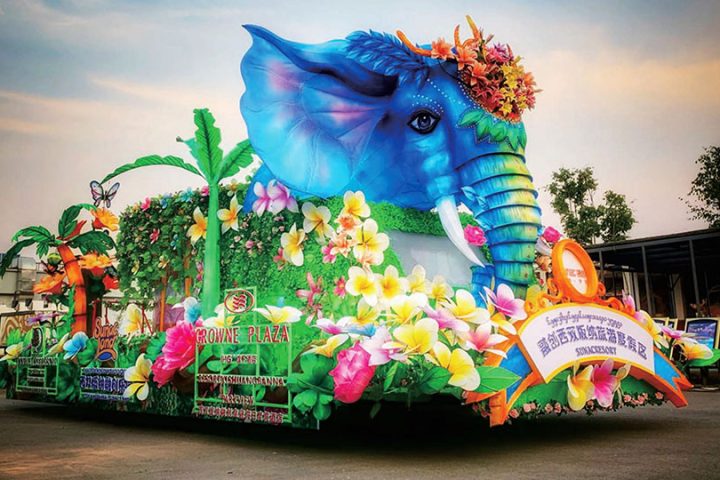
2. Cultural Exchange: Envoys of Light for Civilizational Dialogue
Lunar New Year lantern festivals and exhibitions have become important platforms for cultural exchange between China and foreign countries, reaching local societies through both official and private channels.
Official Cultural Years and Traveling Exhibitions: Within national cultural exchange frameworks like the “Chinese Cultural Year” and “Happy Chinese New Year,” Chinese lanterns frequently appear overseas. For example, Zigong lanterns, acting as cultural ambassadors, have been exhibited in over 80 countries and regions, including the Houston NASA Lantern Festival and the Longleat Safari Park Lantern Festival in the UK, with cumulative attendance exceeding 500 million. These exhibitions not only feature traditional lantern sets but also create customized lanterns that incorporate local cultural elements (such as Disney cartoon characters and local historical figures), greatly enhancing cultural affinity.
Involvement of Museums and Art Institutions: World-class cultural institutions like the British Museum and the Smithsonian Institution have hosted China-themed exhibitions and workshops during the Spring Festival, with lantern-making workshops being one of the most popular activities. This marks a shift from community celebrations to mainstream art venues for Chinese New Year culture, earning it deeper recognition.
Penetration into the Education Sector: Numerous primary and secondary schools and universities worldwide have included the Lunar New Year in their curricula. Students can gain a hands-on understanding of Chinese culture by making simple lanterns and drawing zodiac patterns, promoting cross-cultural understanding among the younger generation.
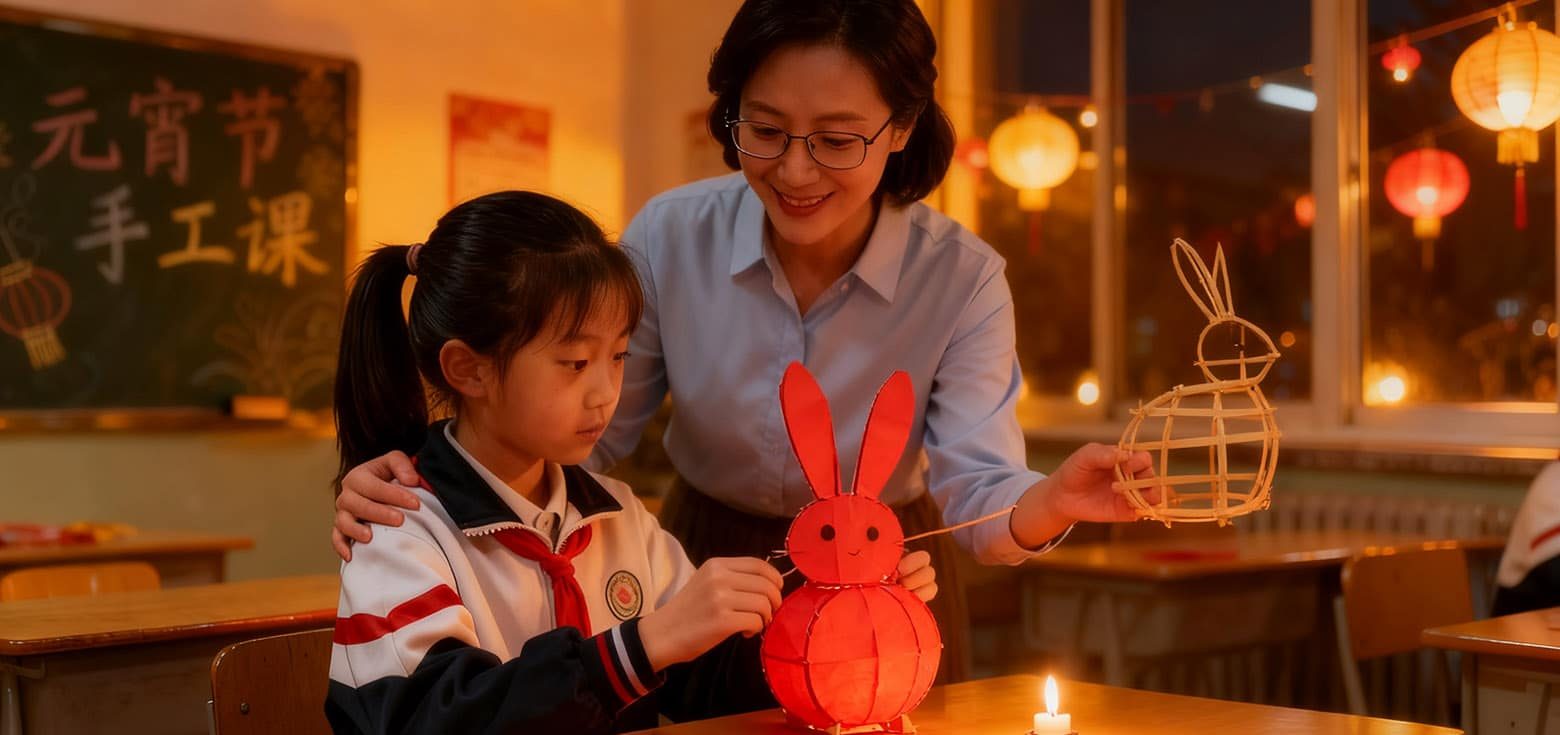
3. Creative Industry: A New Growth Point for Cultural Trade
Chinese New Year lanterns are not only a cultural symbol but have also spawned a vibrant global creative industry, forming a complete supply chain.
Globalization of Design and R&D: Chinese lantern design teams have begun to collaborate with international IPs or create localized designs for specific overseas markets. For example, to cater to the aesthetics of the European market, designs may focus on a simpler, more modern style; while lantern sets designed for the Southeast Asian market may incorporate more elements of Buddhist culture.
Professionalization of Operation and Management: The operation of overseas lantern festivals has become highly professional, including risk assessment, ticketing systems, on-site management, and merchandise development. For example, the operation team for the “Chinese Lantern Festival” in Montauban, France, was a mix of Chinese and French staff, ensuring the event was both authentic and compliant with local regulations and customs, resulting in excellent commercial returns.
Significant Economic Benefits: A successful overseas lantern exhibition project can bring considerable economic benefits. It is estimated that a large-scale Chinese New Year lantern festival held in the Middle East can attract over 300,000 ticketed visitors during its one-month run, with direct ticket revenue reaching millions of dollars and significantly boosting local hotel, dining, and transportation spending.
ForestPaintingLantern, as an industry leader, has successfully expanded its lantern business to global markets. With its exquisite craftsmanship and professional planning capabilities, it has created numerous spectacular lantern events for clients worldwide, spreading the joy and harmony of the China New Year to every corner of the globe.
Professional Services: The Modernization of Traditional Lantern Craftsmanship
As a professional lantern manufacturer originating from “China Light City” Zigong, we are committed to combining the traditional art of Spring Festival lanterns with modern aesthetic demands to provide comprehensive solutions for our clients.
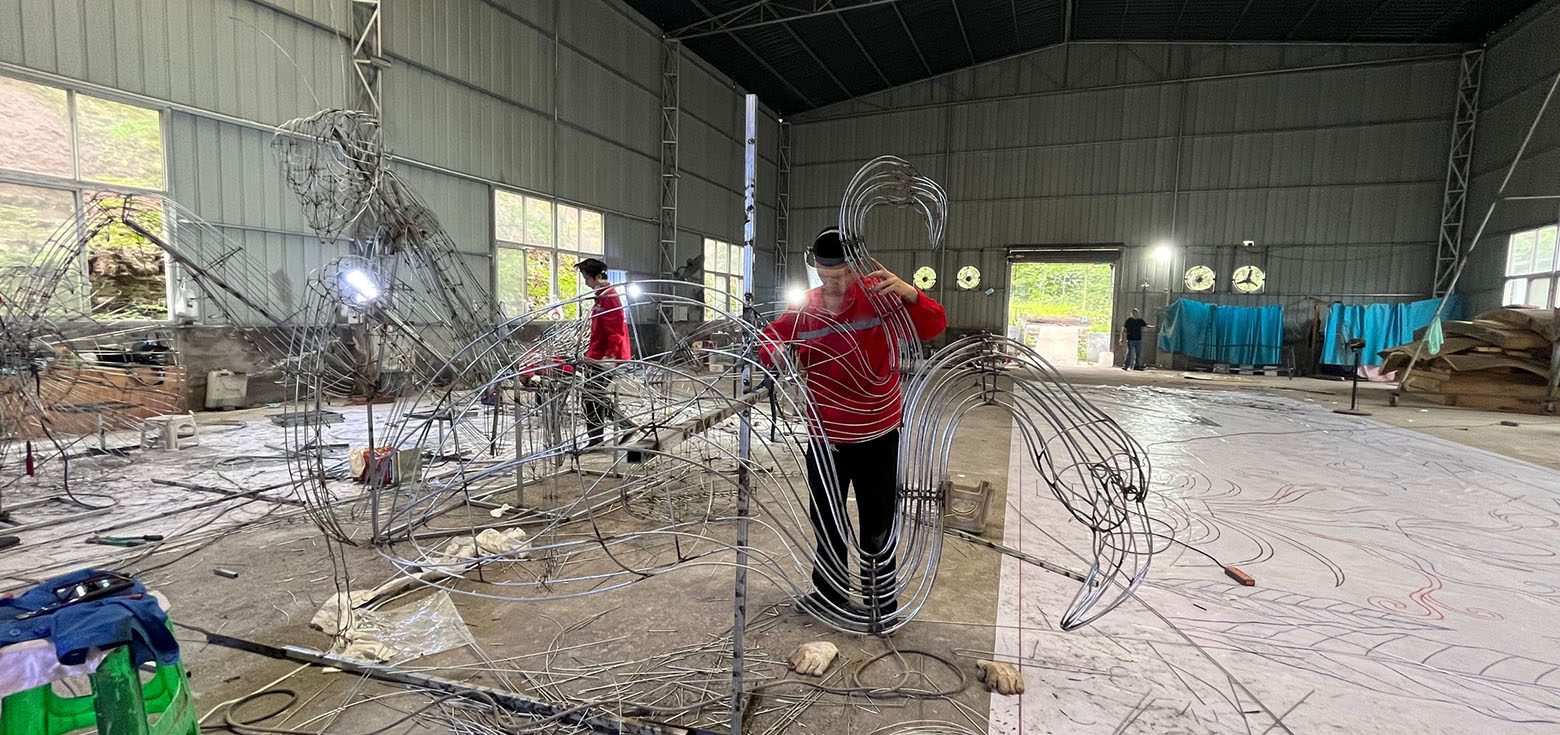
1. Craftsmanship Inheritance
We have several provincial and municipal-level intangible cultural heritage inheritors who are proficient in the complete traditional lantern-making process from design to finished product. This craft not only requires a master’s dedication but is also a systematic science.
Design and Layout: We inherit ancient methods while innovating on design. Our designers are well-versed in the auspicious meanings of traditional patterns and integrate them with modern aesthetics. After completing a draft, experienced artisans make scaled-up layouts, which is the crucial first step to ensuring the precise shape of a large lantern set.
Frame Making: Meticulous work and stable structure. According to the design draft, we use steel and iron wires of various specifications to build the lantern’s three-dimensional skeleton through techniques like binding and welding. Structural mechanics is the hidden core of this process, ensuring the stability and safety of large lanterns during exhibition.
Papering and Decoration: Exquisite materials and superb craftsmanship. After the frame is completed, we use satin, colored fabrics, and special light-transmitting materials for the papering. This process directly determines the final texture and form of the lantern, requiring precise and flawless techniques from the artisans
Lighting Arrangement: The art of light and shadow creates atmosphere. Traditional candlelight has been replaced with modern energy-saving lighting like LED strips and point light sources, which are arranged according to the lantern’s structure and colors. By hiding wires and adjusting light colors and angles, we create a rich, layered, and dreamy visual effect, allowing the lanterns to come to life at night.
- Color Spraying: Layered rendering and precise coloring. We use modern spray gun technology to achieve smooth color transitions and delicate layers by controlling air pressure, distance, and angle. Professional colorists accurately mix colors according to the design drawings to ensure that every color perfectly restores the design effect, infusing the raw piece with a vivid visual impact.
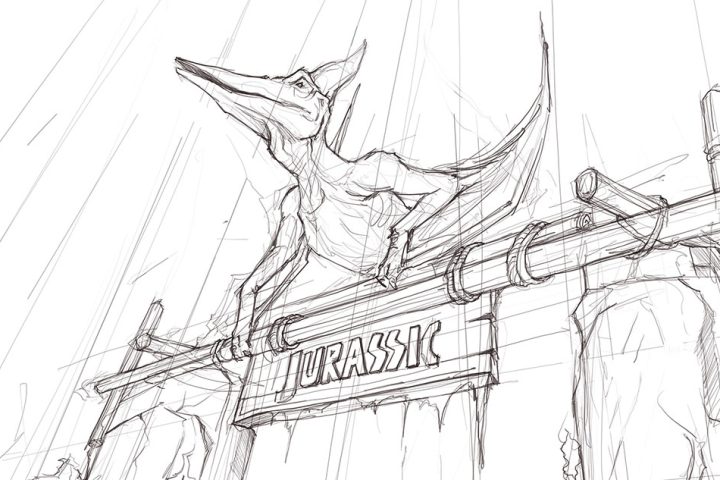
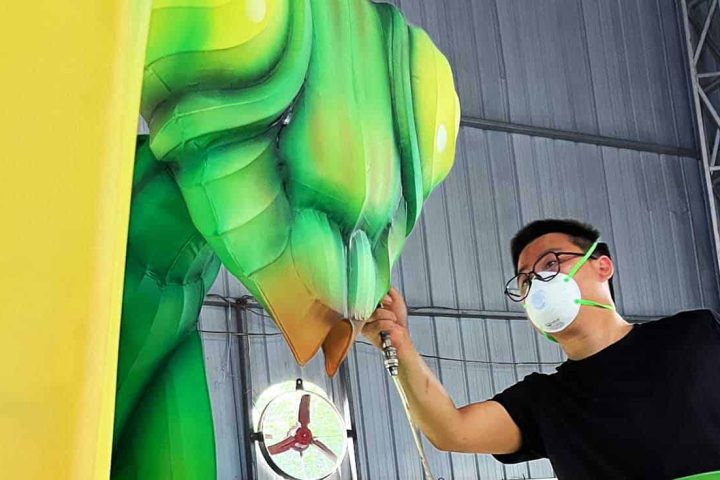
2. Innovative R&D
We focus on the integration of traditional craftsmanship and modern technology:
Material Research: Developing new environmentally friendly and safe materials.For example, our New Year dragon lantern made from recycled plastic water bottles at the 2024 Zigong New Year Lantern Festival was widely praised.
Technical Innovation: Applying new technologies like digital control and smart lighting.
Design Innovation: Integrating contemporary art concepts to create new visual experiences.
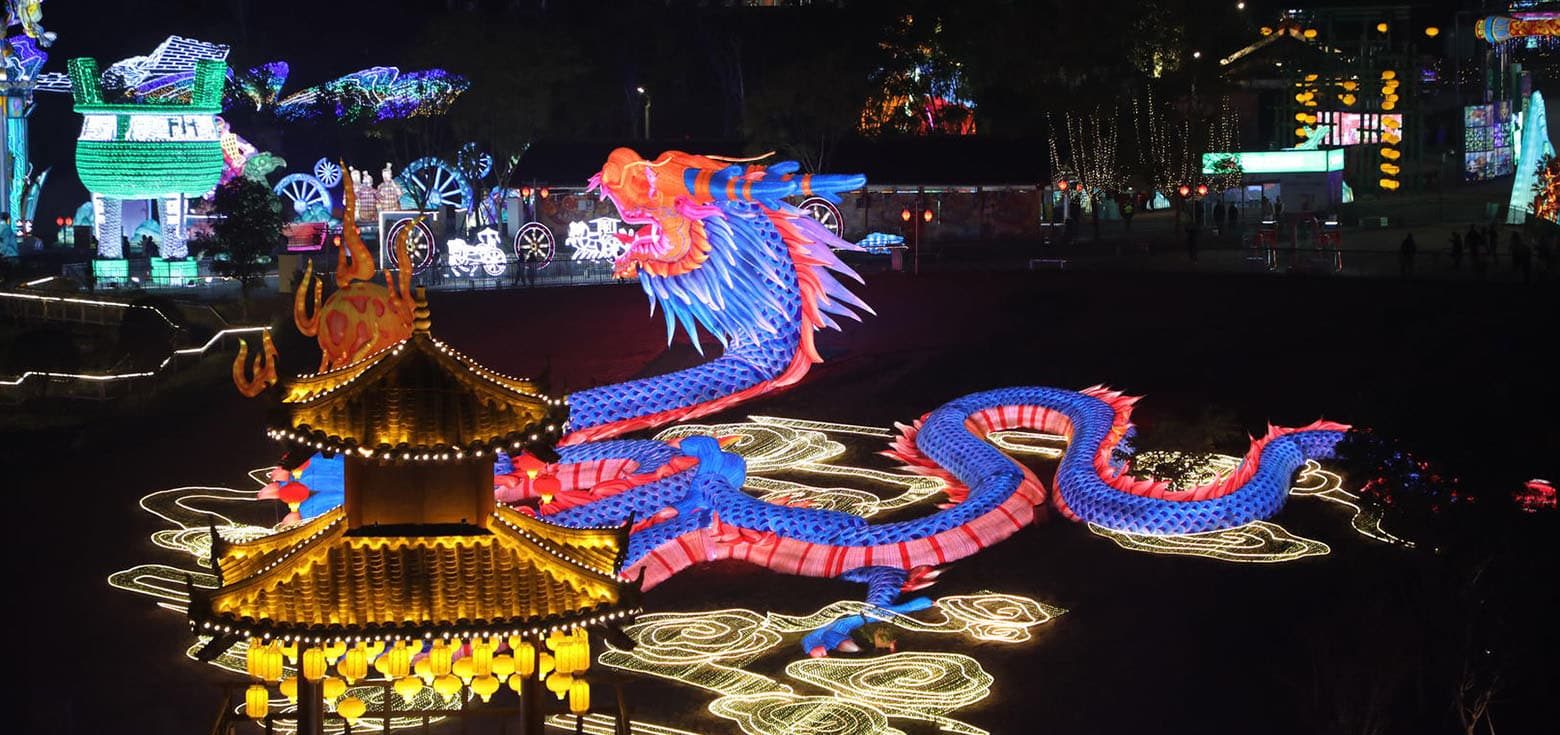
3. Comprehensive Services
We provide one-stop services:
Planning and Design: Offering customized solutions based on venue characteristics and client needs.
Production and Installation: Our professional team provides on-site construction to ensure quality and safety.
Operation and Maintenance: Providing on-site support throughout the exhibition to ensure the best display effect.
Merchandise Development: Developing cultural and creative products to extend cultural value.
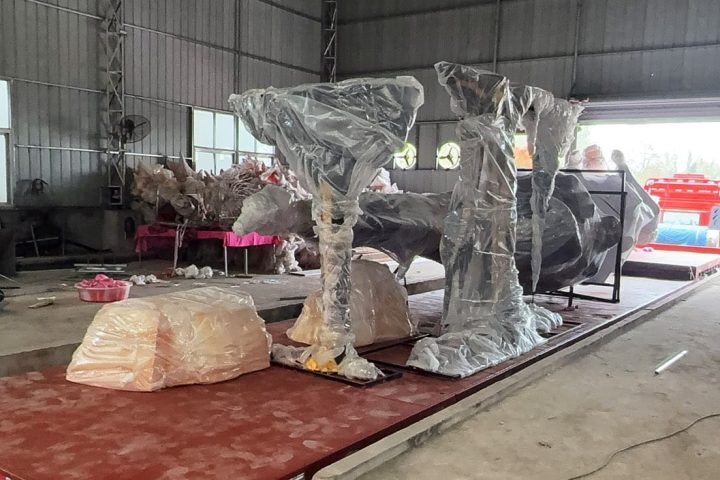
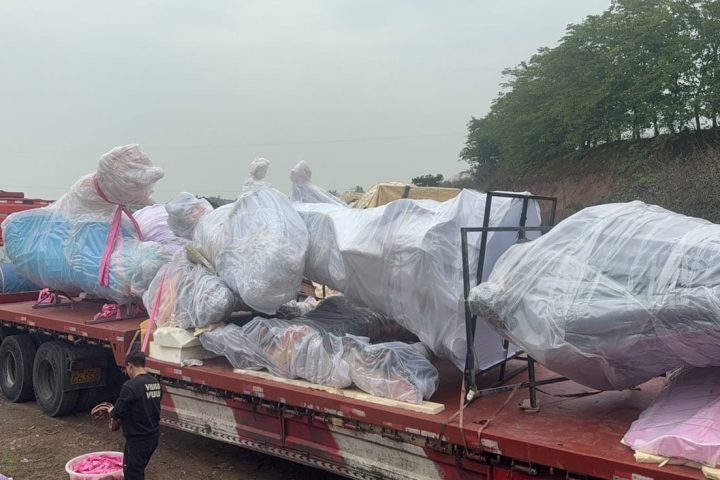
ForestPaintingLantern is dedicated to the inheritance, innovation, and dissemination of Chinese lantern art, providing manufacturing techniques and processes that comply with international standards to our clients.
We welcome partnerships to jointly create spectacular light and shadow feasts.
Conclusion: Cultural Confidence in a Luminous Legacy
The Chinese New Year, as the most important cultural vehicle of the Chinese nation, encapsulates over four thousand years of civilizational wisdom. From ancient seasonal sacrifices to modern New Year celebrations, and from traditional family reunions to global cultural events, the Lunar New Year has consistently maintained its cultural core while continuously evolving. The art of lanterns, as a vital component of New Year culture, not only illuminates the festival night sky but also lights the path for the inheritance and development of Chinese civilization.
In the context of globalization, the Chinese New Year and its lantern culture are gaining new vitality. The fusion of tradition and modernity and the dialogue between the local and the global allow this ancient cultural form to demonstrate its powerful life force. As inheritors and innovators of lantern culture, we will continue to uphold the artisan spirit, safeguard our cultural roots, and dare to innovate, allowing Spring Festival lanterns to shine with even greater brilliance in the new era.
We believe that through the collective efforts of all sectors of society, Chinese New Year culture will continue to innovate in its inheritance and develop through its innovation, making new contributions to the exchange and mutual understanding of human civilizations. Let us work together and witness the eternal charm of this magnificent culture.
Chinese New Year Lanterns FAQs
Have more questions? Feel free to contact us.
What is the relationship and difference between Chinese New Year lanterns and Lantern Festival lanterns?
Spring Festival lanterns and Lantern Festival lanterns both play important roles in Chinese traditional culture; they are closely connected but have subtle differences. Simply put, New Year lanterns refer to the grand art installations that are exhibited throughout the entire Spring Festival period, while Lantern Festival lanterns specifically refer to the lantern festivals and riddle-guessing activities held on or around the fifteenth day of the first lunar month.
Core differences:
Time and Customs: New Year lanterns typically start before the Spring Festival to create a festive atmosphere. Lantern Festival lanterns, however, focus more on the customs of guessing riddles and admiring lanterns, marking the end of the Spring Festival holiday.
Scale and Form: New Year lanterns are generally larger in scale, more like a grand light art show, and often feature gigantic zodiac or mythological figures. Lantern Festival lanterns can also be large-scale festivals, but can also be small, exquisite lanterns hung by individual households.
What elements typically inspire the design of Chinese New Year lanterns?
The design of Chinese New Year lanterns is inspired by a wide range of historical, cultural, and natural elements, with each design carrying an auspicious meaning.
Traditional Culture: The zodiac culture is a core source of inspiration, with a different animal theme each year. Additionally, gods and mythical creatures from legends, such as Chang’e, Sun Wukong, Qilin, and Phoenix, are also frequently used in lantern designs.
Natural Elements: Lantern designs often draw from beautiful elements in nature, such as the peony, which symbolizes prosperity and good fortune, the lotus, which represents purity, and the goldfish, which signifies abundance year after year.
Auspicious Symbols: Traditional symbols like the “福” (fú) character for good fortune, the “寿” (shòu) character for longevity, and Chinese knots are also often incorporated into lantern designs, conveying good wishes for the New Year.
What are the unique characteristics of Chinese New Year lanterns in different regions?
China’s vast territory and cultural differences have given rise to distinctive lantern art styles in different regions.
Southern Lanterns, represented by Zigong Lanterns: Known for their “shape, color, sound, light, and motion,” they are renowned for their exquisite and dynamic craftsmanship. They often blend seamlessly with waterscapes and garden art, showcasing a delicate and magnificent style.
Northern Lanterns, represented by Harbin Ice Lanterns: They leverage the cold climate to combine ice and snow sculpting with modern lighting technology, creating a beautiful and crystal-clear world of ice and snow.
Coastal Region Lanterns with Marine Themes: Many coastal cities use marine elements as their theme, designing lanterns in the shape of various fish, dolphins, and sailing ships, showcasing a unique fishing culture and regional style.
What auspicious meanings do the colors and animal shapes in Chinese New Year lanterns represent?
Every color and shape in New Year lanterns carries profound cultural symbolism, conveying people’s hopes for happiness, wealth, and good luck.
Colors: Red is the most important color, symbolizing celebration, good fortune, and the warding off of evil. Gold represents wealth, prosperity, and nobility. These two colors are often used together to create a magnificent and festive atmosphere.
Animal Shapes: The dragon is a symbol of power and auspiciousness; the phoenix represents good omen and harmony; the fish, as a homophone for “余” (yú), symbolizes abundance year after year; and the bat, because its name “蝠” (fú) is a homophone for “福” (fú), symbolizes good fortune.
With the development of the times, what are the innovations and changes in the production and display of Chinese New Year lanterns?
With the advancement of technology, Chinese New Year lanterns, while retaining the essence of traditional craftsmanship, have also incorporated many modern elements, making them more spectacular and interactive.
Technological Application: From traditional candles to modern LED lights, fiber optics, and projection technology, lanterns can now achieve more complex and dynamic light and shadow effects.
Interactive Experience: Modern lanterns are no longer static. Many now include light, sound, motion, sensors, and even AR technology to interact with the audience, providing a more immersive experience.
Materials and Design: Besides traditional silk and paper, new weather-resistant materials are now used. Designs tend to be large-scale, thematic, and narrative-driven, transforming the entire lantern exhibition into a story-rich cultural experience.





